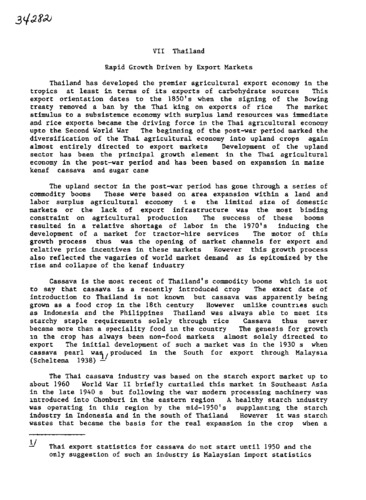Thailand: rapid growth driven by export markets
In Thailand cassava is produced mainly for export. The Thai cassava industry was based on starch export until the 60s when West Germany began to use CSW for animal feed. As this was a by-product of starch manufacturing, shortages resulted, leading to the market for CM. Chips became the dominant export in 1964 and so did native pellets in 1969, and hard pellets in 1983. Thailand went from a minor producer of cassava in the 50s to presently the 2nd largest in the world. Data are provided on production trends, yields (av. 13-14 t/ha), production systems, production costs, and labor utilization. Mechanization has been introduced to decrease costs. Research by the Huai Pong Expt. Station in Rayong (created in 1956) emphasized soil management and fertilization for 2 decades until lack of progress in this area led to a var. improvement program. Increasing yields will be critical in the future. Processing costs have been reduced substantially. Not only has the country adjusted rapidly to changing EEC policies, but has also restructured its export markets. (CIAT)

